Imagine me, a seasoned travel virtuoso, confidently boarding a Shinkansen in Japan. The Shinkansen, Japan’s famed bullet train, is a marvel of engineering, epitomizing efficiency and symbolizing Japan’s technological prowess. It’s sleek, efficient, and on time to the nanosecond, instilling a sense of confidence in even the most apprehensive traveler.
Let’s rewind a few days. The scene: the same train station, the same me, but a starkly different reality. Instead of the picture of composure I had just painted, I was a bundle of confusion, standing before a sprawling map of the Japanese rail network. It was a labyrinth of lines, a kaleidoscope of colors, and a jumble of Japanese characters. My eyes darted across the map, and my mind whirled from the sheer complexity of it all. It looked like it was drawn by a toddler with a box of crayons.
The seasoned traveler façade was crumbling, replaced by bewilderment and a hint of panic. The Shinkansen, once a symbol of my impending adventure, now seemed like an insurmountable challenge. The Japanese train station, initially a gateway to exploration, now felt like a maze I might never escape.
Understanding and mastering Japan’s local transportation system as a tourist is not just about getting from point A to point B. It’s about immersing yourself in the local culture, saving money, and efficiently exploring the country. Because let’s be honest, my initial experience with the Japanese rail system was less “smooth sailing” and more of an “existential rollercoaster.” And, if we’re honest, we’ve all been there. Whether it be trying to explain your goal destination to a taxi driver who talks enthusiastically with his hands or deciphering a bus timetable written from what one can only assume are ancient hieroglyphics. Let’s dive into the glorious chaos of Japanese train travel, shall we?

Grasping the Basics of Japan’s Transit System
Japan’s transit system is renowned for its efficiency, punctuality, and extensive network. However, it can feel like navigating a futurist maze for first-time visitors. But fear not, my fellow wandering travelers. I will break down, in nitty gritty detail, the specifics of how you, too, can traverse this fantastic country with unwavering confidence.
The Various Transportation Types
Japan offers diverse transportation options, each with its own nuances. Mastering these will allow you to explore the country with ease:
Trains: The undisputed king of Japanese transport.
- Shinkansen (Bullet Trains): These iconic speedsters connect significant cities with incredible velocity and precision. Think of them as the sleek, punctual superheroes of the railway world.
- Limited Express Trains: Slightly slower than the bullet trains, these make fewer stops than local trains, making them ideal for medium-distance travel.
- Local Trains: Now, these bad boys. Don’t underestimate their modesty. Regional trains are the workhorses of the railway, stopping at every station. While they might be slower, these trains also provide a much quieter experience when traveling and are excellent for short trips or local exploration.
- Subways: Most prominent cities, like Tokyo, Osaka, and Kyoto, have these. They are essential for the urban sprawl and are fast, frequent, and efficient.
Buses: Trains may dominate, but buses are crucial sidekicks for areas inaccessible by rail. This is true both within cities and for longer journeys.
- City Buses: Used for navigating… well, cities. These buses have varying fare systems (don’t worry, we’ll cover that later) and can sometimes be tricky to navigate due to route complexities and their mapped layout that I’d swear was written back in the Stone Age using petroglyphs.
- Long-Distance Buses: These are a more budget-friendly alternative to trains for long-distance travel between cities. They also offer overnight options, allowing you to save on accommodation costs.
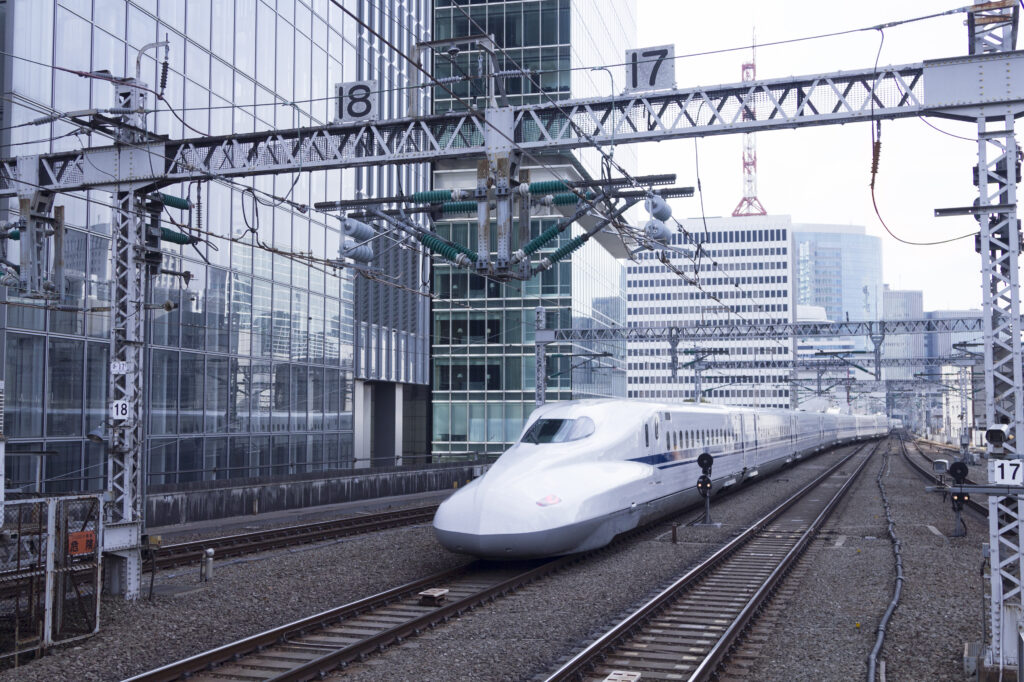
Other Modes of Transport
- Taxis: Ah, the infamous taxi. Who isn’t familiar with them and their more-than-enthusiastic drivers honking their horns at you as they go past? Gotta love soliciting. That said, Japanese taxis, while readily available, are known for their cleanliness and polite drivers. I know, talk about a culture-shock. However, they can be a bit pricey.
- Ferries: Unless you’re an avid swimmer, a ferry is a vital mode of transportation ranging from small local ferries to large, comfortable ships. Make sure to utilize them to explore Japan’s beautiful islands.
- Ubers and Rideshare: This taxi is for the tech-savvy… or the language-impaired. I’ll let you decide which category you fall under. This can simplify things if you don’t feel like exuberantly signaling and waving your hands to communicate with a taxi driver. With Uber or Lyft, or more sophisticated taxi-hailing apps like DiDi and GO, we found rideshare to be among the city’s most efficient transportation methods. Let’s face it: walking to the train station versus summoning a ride with a button on your phone? The rideshare was the more convenient option. While it might not always be the most affordable option (especially long-distance), you are paying for convenience.
Key Terminology
Ah, the Japanese language. Who doesn’t love it? However, unless you study it, you will probably have no idea what is being said during announcements or on signs. So, I will offer some insight into more familiar and essential Japanese terms. You’re welcome.
- Kippu (切符): Simply put, this means ticket. So remember that. You’ll see it everywhere.
- Kaisatsu (改札): “Ticket gate.” Another common one that you’ll see obviously whenever you enter and exit train stations.
- Joshaken (乗車券): This is the “basic fare ticket” to ride most trains.
- Shinkansen (新幹線): Do I need to explain this one?
- Chikatetsu (地下鉄): “Subway.”
- Basu (バス): “Bus.” I know, that’s a tough one.
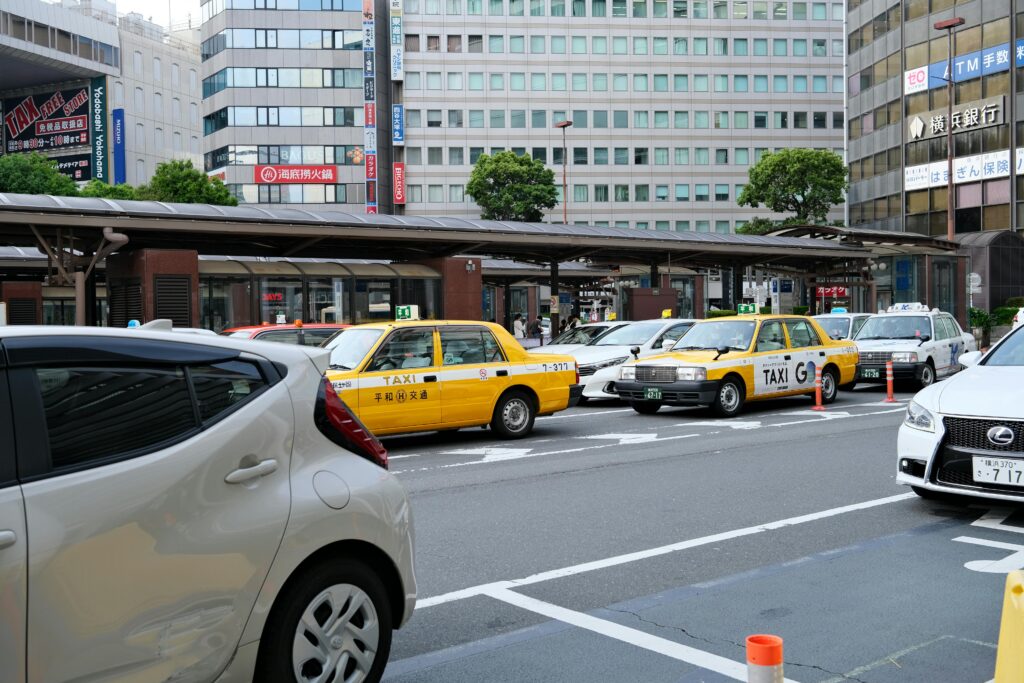
IC Cards
Now, imagine a magical card that lets you glide through ticket gates and pay for your bus fare with a tap. That’s the beauty of these little guys. They’re prepaid and rechargeable (think Suica and Pasmo) and widely accepted across Japan. They also work on almost every train, subway, and bus. Who wants the hassle of buying individual tickets for each ride? Not me, apparently, because my family and I, for whatever reason, opted out of getting one. Oopsies! But you, dear reader, can avoid this pitfall and travel with ease.
And their usefulness doesn’t stop there. These handy dandy pieces of plastic can also be used at vending machines, convenience stores, and even some restaurants.
Purchasing Tickets
The peasants, like me, who choose not to utilize an IC card will have to stoop to buying tickets the old-fashioned way. Ticket machines will be your best friend in this case. They are your go-to for buying most train tickets. And don’t fret. They always had multi-language interfaces. Select the destination on the screen, insert money, and receive your ticket. I know it’s challenging.
Then there are the ticket offices. The green signs above them signal where you can purchase reserved tickets for the Shinkansen and limited express trains. They can also provide information on routes and fares.
JR Passes
A foreign tourist traveling a lot might find value in the Japan Rail Pass (JR Pass). It is a worthwhile investment as it offers unlimited travel on most Japan Railways (JR) lines, including the Shinkansen, for a set number of days (7, 14, or 21). Of course, check whether you will save money based on your itinerary.
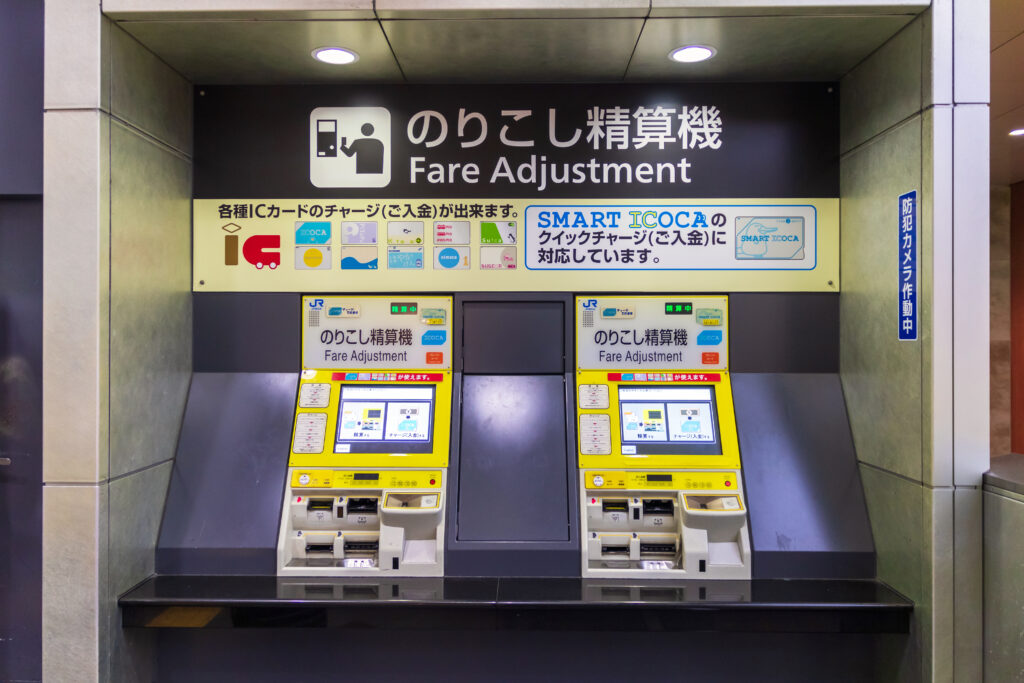
Mastering the Trains
Once again, Japan’s trains are a marvel of engineering and punctuality. It’s a complex network that will seem daunting at first. But fear not, brave one! With some know-how and a dash of adventurous spirit, you’ll navigate them like a local in no time.
The Shinkansen
These bullet trains aren’t just trains; they’re a cultural icon. Japan is a country of efficiency and technological prowess, and these sleek machines will whisk you across the country at speeds that make you question the space-time continuum.
Several different lines connect various regions. The Tokaido Shinkansen, for example, links Tokyo with Osaka. But wait, it gets more complicated. There are different types of bullet trains on all of these various lines. The Nozomi is the fastest, while others, like the Hikari and Kodama, make more stops. Think of it as the difference between an express train and a local train, but, you know, fast.
In addition, there are different classes of service. There’s ordinary, for the peasants and peons. This standard seating divides into non-reserved (jiyū-seki) and reserved (shitei-seki). Non-reserved seating is a gamble; you might get a seat, and you might not. Reserved… well, I don’t think that warrants an explanation. Then there’s the Green Car. This is like first class: wider seats, more legroom, and a quieter atmosphere. If you’re feeling bougie, it’s worth it. The Gran Class. Now this is the luxurious of the luxurious. It takes first class to the extreme. Reclining seats that transition into beds and your very own butler? Talk about royalty.
Reserving seats, no matter the class, is crucial. Imagine showing up for a long-haul flight and hoping there’s an empty seat available. What a nightmare.
You can reserve your seat online, at the ticket counter, or various machines.
Shinkansen Etiquette
We’re not savages, so remember your etiquette. When boarding or disembarking, form an orderly queue and let people off before trying to board. Contrary to what you might be used to if you’re from the United States, it’s a much more well-mannered process. And the other minor details? Well, just don’t be rude. Don’t block the aisles. Keep your voices down. Clean up after yourself. Simple, right?
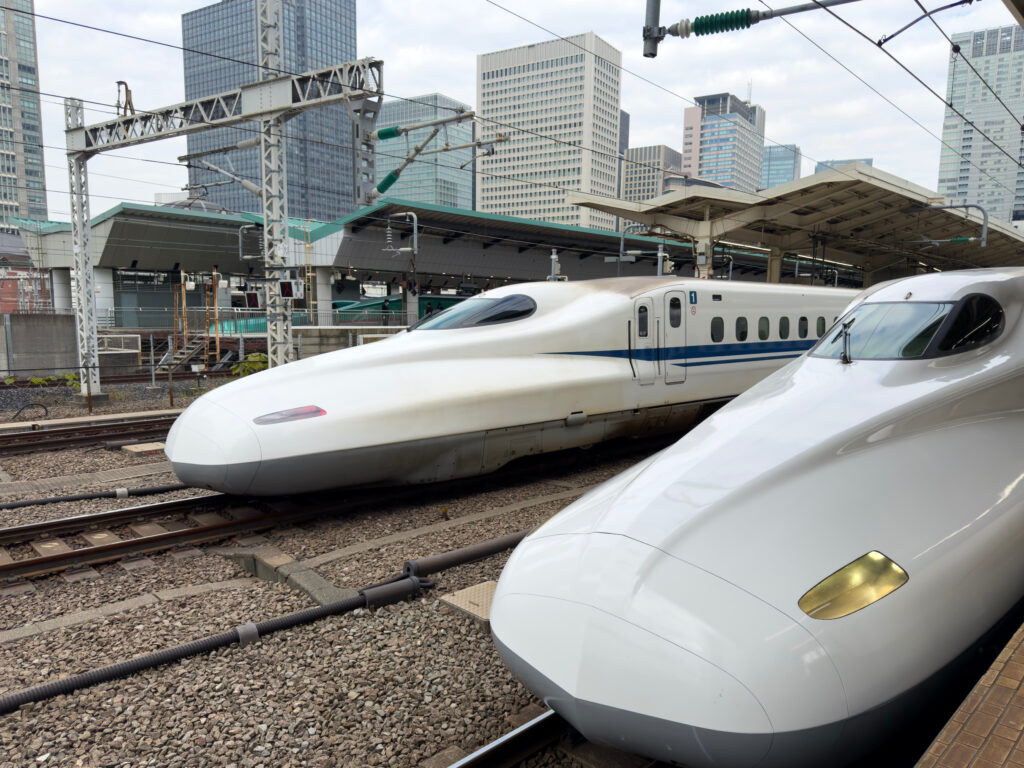
Mastering the Buses
Japan’s trains typically steal the spotlight, but the buses are the unsung heroes of local transport. They’re invaluable for venturing off the beaten path or navigating within cities. They can be a bit more… unpredictable than their rail-bound counterparts, but with some prep work, you’ll be a pro in no time.
City Buses
While bus stops in Japan often look like cryptic symbols, they usually display the bus route number and the names of the main stops. The route maps can also be posted in some places but can be… dense.
In major cities, there are apps (like good ol’ Google Maps) that are very reliable and godsend. Boarding procedures might vary in other cities, but you usually enter through the rear and exit through the front. But when in doubt, follow the locals. They have, after all, been doing this their whole lives.
When approaching your stop, press the button on the side of the bus. Don’t be shy about it either, because they mean business and will continue if nobody needs to get on or off.
Paying Fares
IC Cards would have been a lovely friend to have here. Instead, we paid with cash, which can be messy since exact change is usually required (though there’s often a change machine for breaking down large bills if needed).
Understanding bus schedules and timetables
Bus timetables are posted at bus stops and are, in typical Japanese fashion, very precise… most of the time. However, traffic can throw things off, especially in big cities. As they often differ, check whether the schedule is for weekdays, weekends, or holidays.
Tips for using city buses in major cities (e.g., Tokyo, Kyoto):
Be prepared for a squeeze in crowded cities like Tokyo. Kyoto buses are notoriously crowded with tourists, especially during peak season. Patience is key.
Long-Distance Buses
Booking tickets online or at bus terminals: Long-distance buses are a budget-friendly alternative to trains for travel between cities. You can book tickets online or at central bus terminals. Some long-distance buses have comfy seats and even sleeping pods, especially on overnight routes. This can save you a night’s accommodation costs, but be prepared for a potentially… cozy experience with your fellow passengers. Amenities vary, but many long-distance buses offer reclining seats, onboard restrooms, and sometimes Wi-Fi.
Tips for overnight bus travel: Bring a neck pillow, eye mask, and earplugs. Trust me on this. Dress comfortably and bring a blanket or jacket, as the temperature can fluctuate. Keep your valuables close, and be aware of your surroundings, especially when stopping at rest areas.
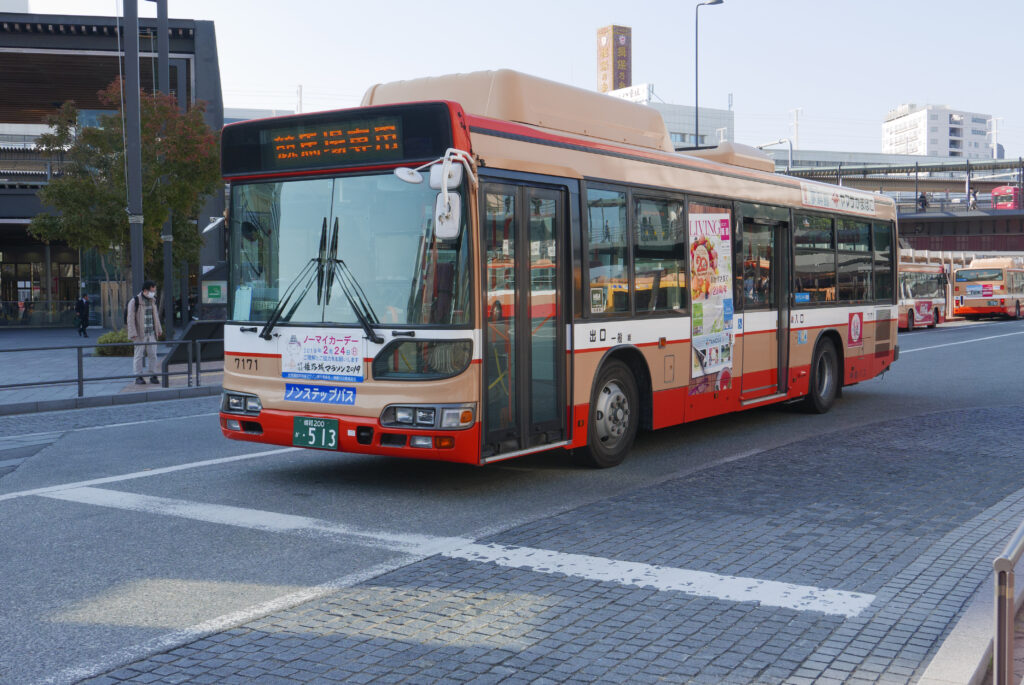
IC Cards: Your Best Friend in Japan
In the realm of Japanese public transport, IC cards reign supreme. Think of them as your all-access pass to seamless travel (and beyond!). Ditch the fumbling for change and embrace the tap-and-go revolution.
Detailed Explanation of IC Cards
How to purchase and recharge: You can snag an IC card (like Suica or Pasmo) from ticket machines or counters at most major train stations. The machines have English options, so don’t worry about accidentally buying a one-way ticket to Osaka. Recharging is equally painless. Just pop the card into a machine and add funds. You can also often recharge at convenience stores, ubiquitous in Japan.
Using IC cards for various transportation modes: IC cards work on almost any train, subway, and bus in significant cities and a growing number in regional areas. Just tap the card on the reader when you enter and exit the ticket gates or board/alight the bus. It’s so satisfyingly simple.
Expanding IC card usage (vending machines, stores): But wait, there’s more! IC cards aren’t just for trains and buses. You can also use them at many vending machines (for that crucial post-train coffee), convenience stores (for late-night snacks), and even some restaurants and shops. They’re like a prepaid debit card but way more convenient.
Regional Differences in IC Card Usage
While Suica and Pasmo are the big players, other regions have their own IC cards (like Icoca in Osaka or Kitaca in Hokkaido). Thanks to a nationwide system, the good news is that most of these cards are now interchangeable. So, a Suica card you buy in Tokyo will likely work in Osaka, and vice versa. But it’s always good to double-check, especially in more rural areas.
Troubleshooting IC Cards
- Low balance? Recharge it! You don’t want to be that person holding up the line at the ticket gate.
- Is the card not working? Try cleaning the card. If that doesn’t work, head to a ticket office.
- Lost your card? Unfortunately, you’re usually out of luck, as they’re not typically registered to a specific user. So, treat it like cash!
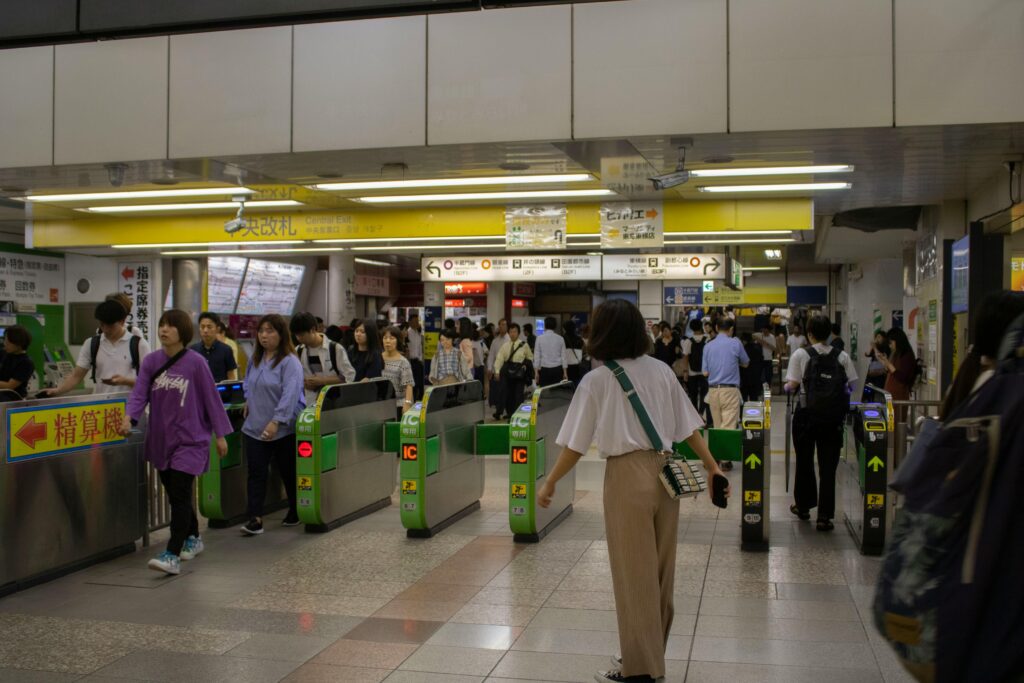
Train Station Survival Guide
Japanese train stations are bustling hubs of activity, veritable cities unto themselves. While incredibly efficient, they can be overwhelming for the uninitiated. This guide will help you navigate these often-daunting spaces with confidence and grace (or at least without getting hopelessly lost).
Navigating Large Stations
Finding platforms, exits, and facilities: Large stations, like Tokyo Station or Shinjuku Station, are multi-level labyrinths with dozens of platforms and exits. The key is to rely on the clear and (usually) bilingual signage.
Signage: Look for signs with platform numbers (ホーム), train lines (線), and destinations. English translations are generally provided, but the font size can vary, so keep your eyes peeled.
Station Maps: Most stations have maps near the ticket gates or information booths. These maps can be your best friend, showing the station’s layout, the location of facilities (restrooms, lockers, etc.), and how to get to different lines. Download a station map on your phone if you can.
Using station maps and signage: Orient yourself on the map first. Find your current location (現在地) and your destination. Plan your route, noting the platform numbers and any transfers you need to make. Follow the signs carefully, as they will lead you to the correct platform or exit.
Dealing with crowds: Japanese train stations can be incredibly crowded, especially during rush hour.
- Rush Hour: Be prepared to shuffle along with the crowd.
- Stay to the left or right: Observe the traffic flow and keep to one side to avoid obstructing others.
- Mind your belongings: Keep your bags close and know your surroundings.
Understanding Announcements and Displays
Decoding Japanese announcements: Train announcements are, of course, primarily in Japanese. While English announcements are becoming more common, especially on significant lines and in tourist areas, it’s helpful to recognize a few key phrases. Train departure and arrival times are precise.
Using English signage and translations: Most major stations have English signage, particularly for line names, platform numbers, and station names. Electronic displays also usually alternate between Japanese and English.
Station Etiquette
Queuing, boarding, and deboarding: The Japanese are masters of orderly queuing. Look for the markings on the platform indicating where to line up for each door. Wait for passengers to disembark before attempting to board the train. Don’t push or shove, even when it’s crowded.
Respecting other passengers: Keep your voice down. Refrain from talking loudly on your phone (it’s generally considered rude). Don’t eat or drink on crowded trains. Give up your seat to older, pregnant, or disabled passengers.
Handling luggage: Be mindful of your luggage in crowded stations and trains. Use overhead racks or designated luggage spaces whenever possible. Avoid blocking pathways or ticket gates with your bags.
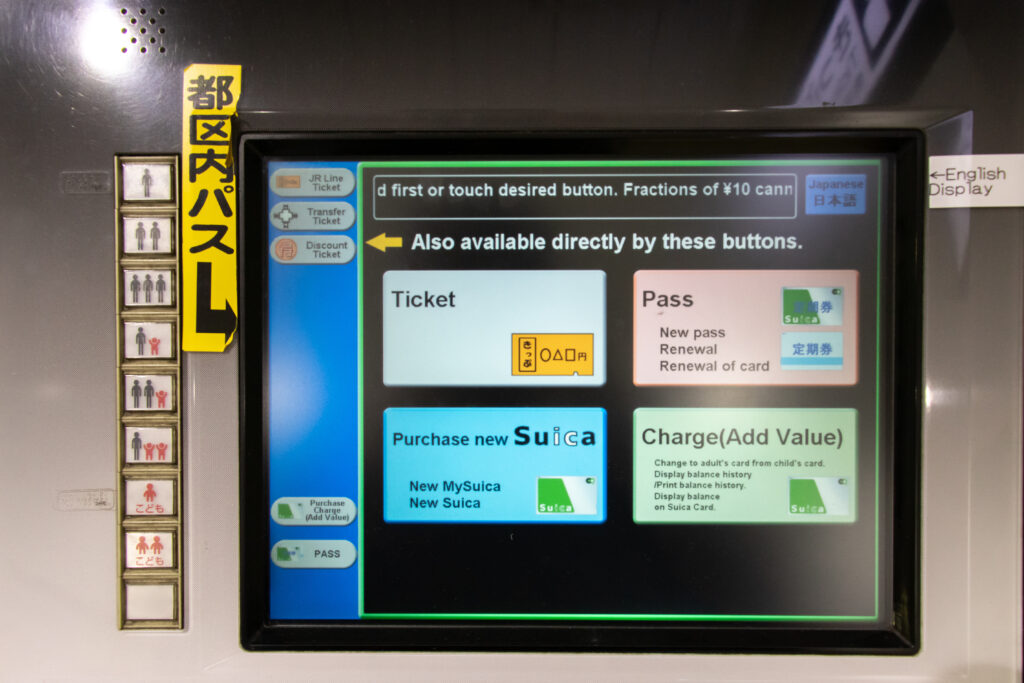
Advanced Tips and Tricks
You’ve mastered the basics; it’s time to level up your Japan transit game. This section will equip you with insider knowledge and strategies for seamless, stress-free travel.
Using Apps for Navigation and Real-Time Updates
Recommended apps (Japan Transit Planner, Google Maps, etc.):
- Japan Transit Planner (Jorudan): This app is a powerhouse, providing detailed train and bus routes, timetables, and platform information. It’s a favorite among locals and savvy travelers.
- Google Maps: While Google Maps is generally reliable, it’s perfect for walking directions and getting a general overview.
- HyperDia: (Web) A classic tool for serious train travelers, HyperDia lets you input precise times and dates for complex searches.
Tips for using apps effectively:
- Download offline maps: If your data is spotty, downloading maps beforehand can be a lifesaver.
- Check for delays: Many apps provide real-time updates on delays or disruptions, which can help you adjust your plans.
- Compare routes: Don’t rely on the app’s first route. Explore alternatives, as they might be faster or cheaper.
Planning Complex Journeys
Combining different modes of transport: Japan’s transit system is interconnected, so you’ll often find yourself switching between trains, subways, and buses. Planning these transfers carefully is crucial.
Using journey planners: Tools like HyperDia or Japan Transit Planner let you input your starting point, destination, and desired arrival time, and they’ll map out the entire journey for you, including transfers.
- Pro tip: When using journey planners, specify your preferences, such as whether you want the fastest route, the cheapest route, or a route with fewer transfers.
Dealing with Delays and Disruptions
How to stay informed:
- Keep an eye on electronic displays at stations, which usually indicate any delays or changes in service.
- Listen to station announcements, even if you don’t understand Japanese.
- Check your transit app for updates.
Alternative routes and options:
- If your train is delayed, don’t panic. There are usually alternative routes or other train lines you can take.
- Station staff can be invaluable in these situations, so don’t hesitate to ask for assistance.
Accessibility
Information for travelers with disabilities: Japan is increasingly making its transit system more accessible. Many stations have elevators, ramps, and accessible restrooms.
Accessible facilities and services: Trains often have priority seating for older, pregnant, or disabled passengers. Station staff can assist travelers with disabilities by helping them board and alight trains.
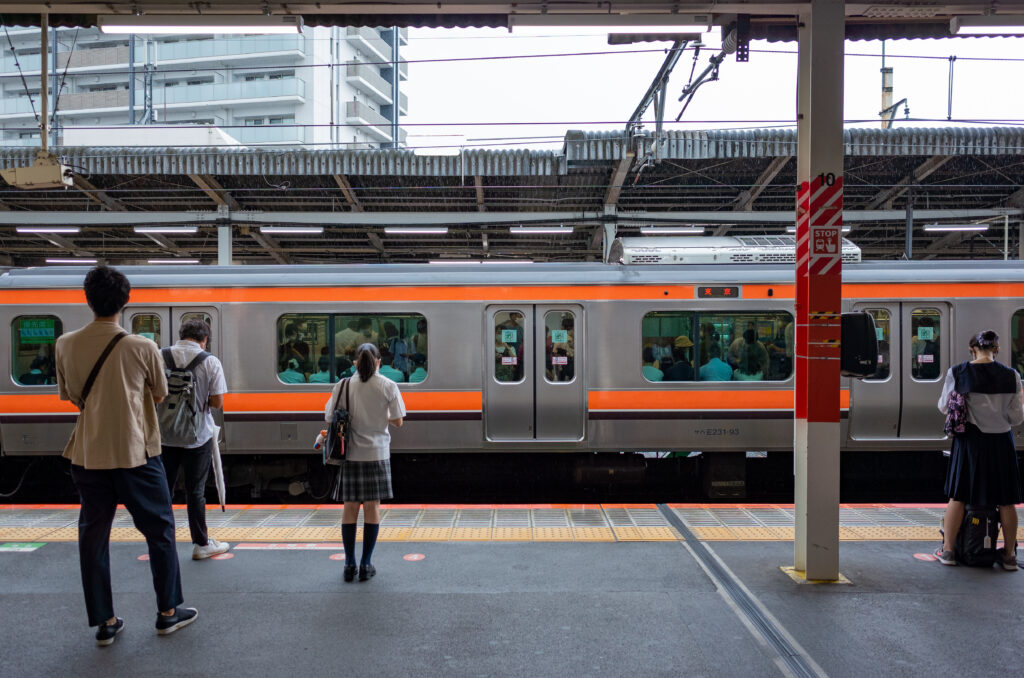
Conclusion
So, there you have it. From the lightning-fast Shinkansen to the labyrinthine local lines, Japan’s transit system is a force to be reckoned with. It’s a complex, efficient, and occasionally bewildering network that can make or break your trip. But with some preparation and the right attitude, you’ll navigate it like a pro.
Remember, the key is to embrace the challenge. Yes, you might get lost once or twice. You might accidentally get on the wrong train and end up in a charming town you never intended to visit. You might even have a close encounter with a salaryman’s briefcase during rush hour. But these are the moments that make travel memorable.
Japan’s transit system reflects the country itself: efficient, punctual, and surprisingly courteous. By mastering it, you’ll gain a deeper understanding of Japanese culture and unlock a level of independence that will allow you to explore far beyond the typical tourist traps.
So, go forth, intrepid traveler! Armed with your IC card, downloaded transit apps, and newfound knowledge of train etiquette, conquer those train stations, master those bus routes, and embrace the adventure. And when you inevitably encounter a moment of transit-related “shenanigans,” just remember: You’re not alone and have a great story to tell.
Tell me about your most memorable Japan transit adventure in the comments below!


Keep up with my latest adventures in Adventures Unpacked! A newsletter for the wanderlust-filled adventurer with news on my latest journeys, travel and photography tips, and more!